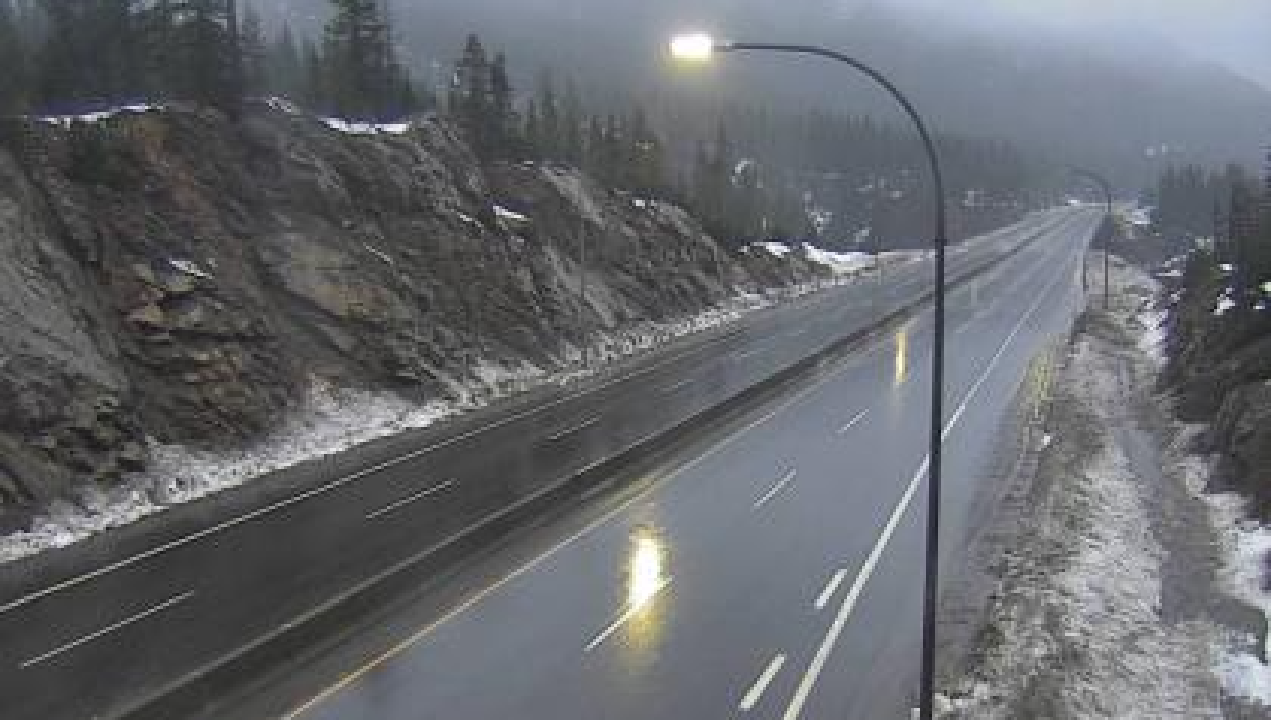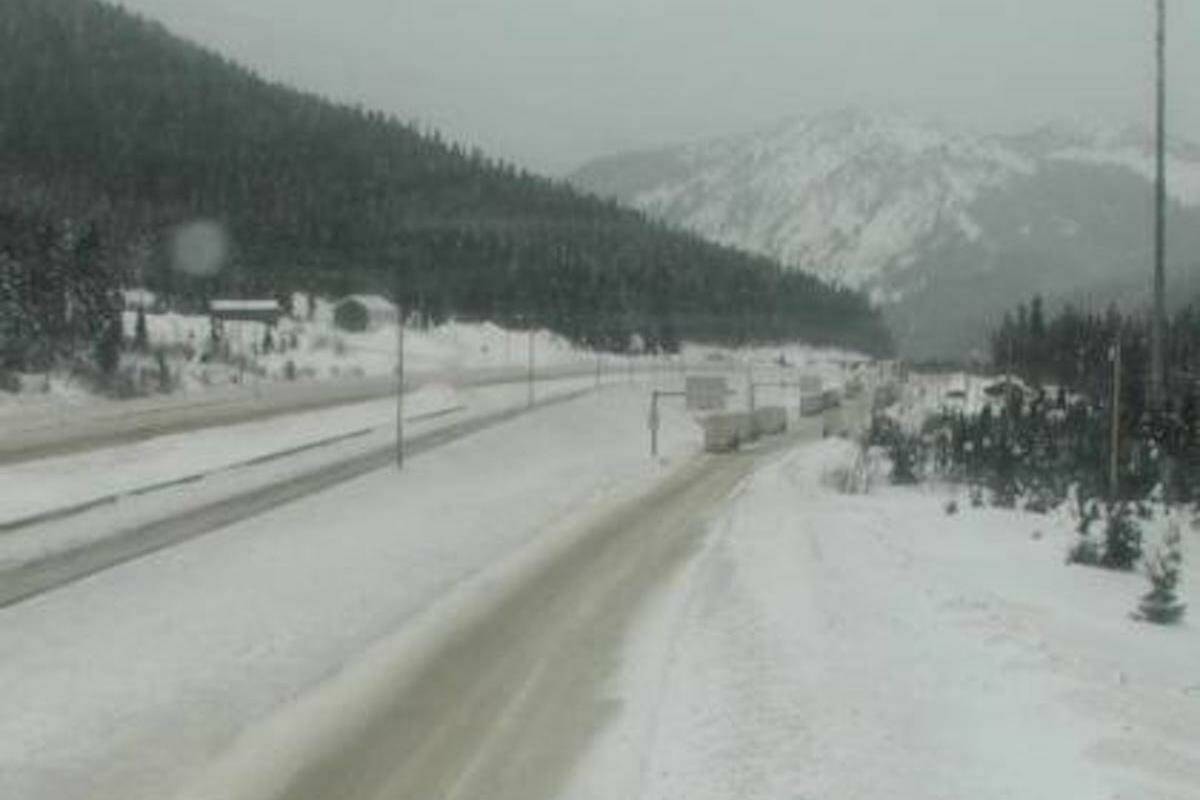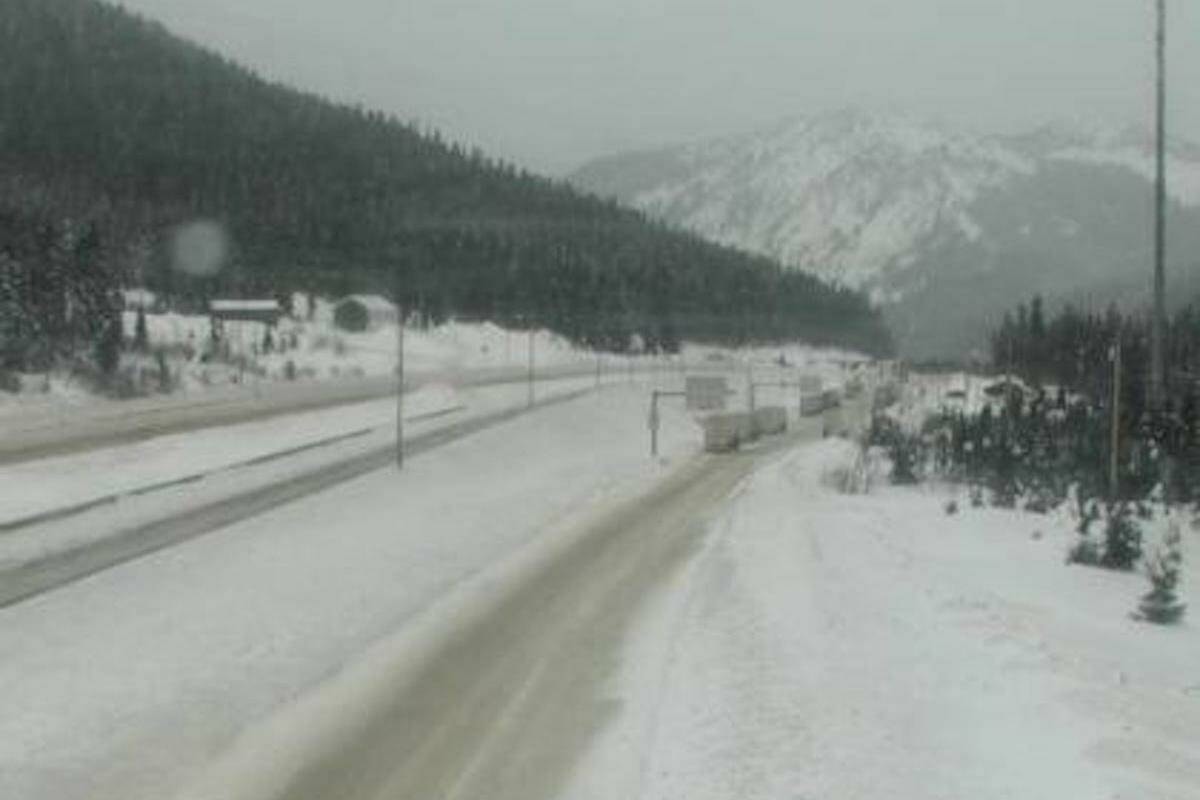Coquihalla weather cameras provide crucial real-time visual data, offering invaluable insights into the conditions of this vital transportation artery. The challenging terrain and unpredictable weather of the Coquihalla Highway make these cameras essential for ensuring safe passage for drivers, and for effective transportation management. This exploration delves into the functionality, limitations, and overall impact of this critical system.
From the placement and coverage of these cameras to their integration with broader weather forecasting services, we’ll examine how this technology contributes to improved driver safety and efficient transportation planning along the Coquihalla. We will also explore the economic impact of weather-related disruptions and suggest potential improvements to the existing system.
Monitoring the Coquihalla Highway’s weather conditions is crucial for safe travel, often relying on readily available webcams. The recent news regarding a drone incident, nj drone shot down , highlights the importance of responsible airspace usage, especially near critical infrastructure. This incident underscores the need for clear regulations and heightened awareness surrounding aerial technology, even as we depend on technologies like the Coquihalla weather camera for essential information.
Coquihalla Highway Weather Cameras: Enhancing Safety and Transportation: Coquihalla Weather Camera
The Coquihalla Highway, a vital transportation artery in British Columbia, Canada, presents unique challenges due to its mountainous terrain and unpredictable weather. Real-time weather camera data plays a crucial role in mitigating risks and ensuring the safe and efficient movement of goods and people along this critical route. This article explores the network of weather cameras deployed along the Coquihalla, their capabilities, limitations, and integration with other weather services to enhance safety and transportation management.
Coquihalla Highway Overview, Coquihalla weather camera

The Coquihalla Highway (Highway 5) traverses the rugged Coquihalla Mountains, characterized by steep grades, numerous bridges, and exposure to extreme weather conditions. Its significance lies in its role as a major north-south transportation link connecting the Lower Mainland of British Columbia with the Interior. The highway experiences diverse weather patterns throughout the year, ranging from heavy snowfall and freezing rain in winter to intense heat and wildfire risk in summer.
Adverse weather, including blizzards, avalanches, and flooding, can lead to road closures, traffic delays, and accidents, significantly impacting transportation and the economy.
Weather Camera Locations and Coverage
A network of weather cameras is strategically positioned along the Coquihalla Highway to provide real-time visual data on road conditions. These cameras offer varying coverage areas, capturing different sections of the highway and surrounding landscapes. The precise locations and data feeds are subject to change, and official sources should be consulted for the most up-to-date information. However, cameras are generally located at key points along the highway, such as summit areas and stretches known for severe weather.
| Camera Location (Approximate) | Viewing Angle | Real-time Data Feed | Latitude/Longitude (Approximate) |
|---|---|---|---|
| Near Hope | Southbound approach to the mountains | Road conditions, visibility | 49.7° N, 121.5° W (example) |
| Coquihalla Summit | 360° panoramic view | Snow accumulation, visibility, temperature (if available) | 50.0° N, 121.0° W (example) |
| Near Kamloops | Northbound approach to the valley | Road conditions, visibility | 50.7° N, 120.5° W (example) |
| Canyon area | Specific sections prone to rockfalls or flooding | Road conditions, hazards | 50.2° N, 121.2° W (example) |
The combined coverage of these cameras provides a relatively comprehensive view of the highway’s conditions, though some blind spots may exist, particularly in areas with challenging terrain.
Data Provided by the Weather Cameras
Coquihalla weather cameras primarily provide visual data, offering real-time insights into road conditions, snow accumulation, visibility, and the presence of hazards. This visual information is invaluable for drivers, transportation authorities, and emergency services. The cameras help assess the severity of weather events, enabling timely decisions regarding road closures, speed restrictions, and resource allocation. However, the data has limitations. Camera views can be obscured by heavy snow, fog, or darkness.
Furthermore, cameras may not capture all potential hazards, such as black ice or unexpected debris on the road.
Integration with Other Weather Services
Weather camera data is most effective when integrated with other weather forecasting services. Traditional weather forecasts provide predictions of temperature, precipitation, and wind, while camera data offers real-time observations of actual conditions. A hypothetical integrated system could combine these data sources to provide more accurate and timely alerts. For example, a forecast predicting heavy snowfall combined with real-time camera images showing rapidly accumulating snow could trigger automated alerts and advisories to drivers.
This integration could significantly improve driver safety by providing more precise information about road conditions, enabling better route planning, and facilitating proactive responses to hazardous situations. The improved accuracy could also lead to more efficient transportation management, minimizing delays and disruptions caused by adverse weather.
Impact on Transportation and Safety

Real-time weather camera data has demonstrably improved safety on the Coquihalla Highway. By providing advance warning of hazardous conditions, the cameras allow drivers to make informed decisions, potentially avoiding accidents or dangerous situations. The data also enables transportation authorities to implement proactive measures, such as closing sections of the highway before conditions become critically hazardous.
Weather-related closures and delays on the Coquihalla Highway have significant economic consequences, impacting the transportation of goods and affecting businesses reliant on timely deliveries. The cost of closures, including lost productivity, emergency response costs, and the economic ripple effects, underscores the value of a robust weather monitoring system.
- Increased frequency of camera maintenance and upgrades.
- Expansion of the camera network to cover areas with limited visibility.
- Development of advanced image processing algorithms to improve data analysis.
- Integration of additional sensors (e.g., temperature, wind speed) for comprehensive data collection.
Visual Representation of Weather Conditions
A typical winter scene captured by a Coquihalla weather camera might depict a highway covered in several inches of snow, with reduced visibility due to falling snow and blowing snowdrifts. The road may be partially or completely snow-covered, and vehicles might be moving slowly or stopped. The overall scene would be characterized by a muted palette of whites and grays, with limited visibility beyond a few hundred meters.
In contrast, a summer scene would likely show clear skies, with bright sunlight illuminating the highway and surrounding mountains. The road surface would be dry, and the vegetation would be lush and green. The temperature could be estimated from the lighting conditions and the appearance of the landscape. Potential hazards like rockslides or areas of construction might be visible.
A scene depicting challenging weather conditions, such as heavy fog, would showcase significantly reduced visibility, with the highway barely discernible beyond a few tens of meters. The fog would create a hazy, indistinct image, and the overall mood would be one of caution and uncertainty. A blizzard scene would show heavy snowfall, near-zero visibility, and potentially drifting snow obscuring the road entirely.
Monitoring the Coquihalla Highway’s weather conditions is crucial for safe travel, and real-time feeds from weather cameras are invaluable. For those considering aerial monitoring using drones, however, obtaining the necessary transport canada drone license is a prerequisite. This ensures safe and legal operation, ultimately contributing to better overall weather data collection for resources like the Coquihalla weather camera system.
The Coquihalla weather camera system stands as a testament to the power of technology in enhancing highway safety and mitigating the risks associated with unpredictable mountain weather. While limitations exist, the real-time visual data provided significantly improves driver awareness and enables proactive transportation management. Continued investment in improving the system, including expanding camera coverage and enhancing data integration, promises even greater benefits for drivers and the regional economy.
Clarifying Questions
How often are the Coquihalla weather camera images updated?
Update frequency varies depending on the specific camera and system; however, most aim for frequent updates, often every few minutes to provide near real-time views.
Are the Coquihalla weather cameras operational 24/7?
Yes, these cameras are typically designed for continuous operation to provide around-the-clock monitoring of conditions.
What happens if a weather camera malfunctions?
Maintenance protocols are in place to address malfunctions promptly. Redundancy measures and backup systems may also be employed to ensure continuous coverage.
Can the weather camera data be accessed via mobile app?
The availability of mobile apps varies depending on the specific transportation authority managing the cameras. Check relevant government websites for app availability.
